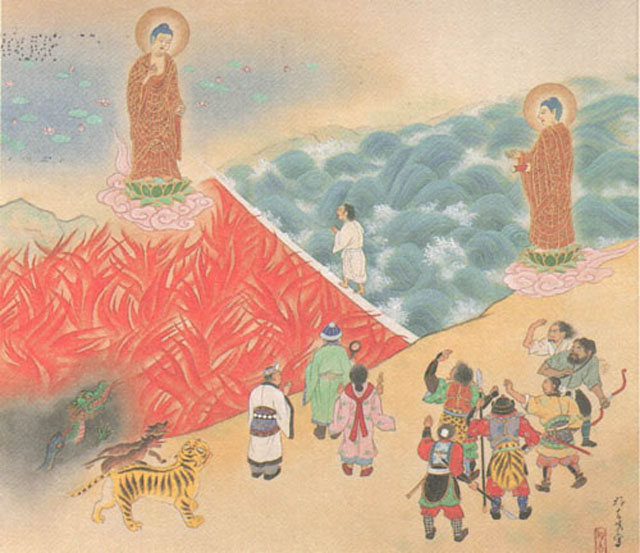A Journey into The Hills
A Dharma Glimpse by Philip
I recently returned to live in Malvern. I’m temporarily staying at the temple, where I lived for a year not so long ago, while I find myself somewhere more permanent nearby.
The hills have always had something special for me. I used to come here by bus and train when I lived in the Black Country of a weekend. It was always worth the effort. I frequently forget how great I thought it would be to live here in Malvern. And now I’ve done it. Twice. I’m not a huge walker, but get out for at least a short walk in the hills several times a week when I’ve lived here or come down to stay at the temple for a few days or more. I waited about a week this time before going in them. I think I wanted to ground myself at the temple. I’m learning to ground myself more when there has been, or will be, some sort of change that will rattle my younger parts.
I went on a sunny day. It was beautiful. As soon as I got to a wooded path up into the hills, memories and feelings came back of a sangha member who is no longer physically with us, but lives on through a memorial apple tree in the garden. It brought up loss and sadness. I’d bumped into him several times around this area of the hills. And that triggered other, even deeper, losses experienced whilst living at the temple the last time.
I carried on trudging along the paths. Through woods. Gently touching the leaves and occasionally a solid, wise and kind feeling tree trunk. They have a knowing for me. The sun had been obscured by these for much of the route, but I could still feel its warmth. Maybe like the warmth of Amida; we can’t necessarily see it, but we can feel it if we try. Which, for me, seems to have a lot to do with surrendering.
I stopped when the sun was more directly overhead. Peering through the leaves and branches that were gently swaying in the gentle breeze. Shadows flickering and dancing all around me. I consciously tried to really notice the warmth of the sun and the beauty all around me. I thought of the cross training machines I’ve started using at the Malvern Splash gym. They now have a screen showing a journey through somewhere pleasant, usually the sort of nature I was experiencing. Parts of me may not be able to distinguish these recordings from actually being in nature; both have a soothing, calming effect. But parts of me do know, and feel, the difference. And, perhaps, parts of me know and feel the reality I perceive is only one reality. And maybe not the true nature of reality. If a TV screen can deceive me, I’m guessing plenty more can. I think I had an instinctive knowing up there that a deeper reality was behind what I was seeing and perceiving. I am becoming more accepting of that. It isn’t as scary as it used to be. Just like, relatedly, impermanence isn’t. Although parts of me are still very scared and confused. I’m acknowledging them as I write and trying to send them compassion and soothing, which they have so often gone without in my life.
My journey in the hills continued down some winding, wooded paths. There was less inspiration and more (albeit limited) physical pain from the pressure on joints from descending and gravity. This journey ended back at the temple. But my journey through life goes on, for however long that will be. The walk in the hills felt like a microcosm of that wider journey; loss, sadness, inspiration, warmth, beauty, pain. The physical distance hadn’t been so far, but emotionally and spiritually had felt much longer. Like the theory of relativity perhaps; different worlds and realms coming together on the hills that are on different trajectories. I’m trying to stay more in the present, whilst opening up more to connecting with the past. Perhaps that might relate to ‘The Shamanic Bones of Zen’ I’m reading for the current temple book group. We’ll see. For now, I feel grateful for my journey in the hills.
Namo Amida Bu


